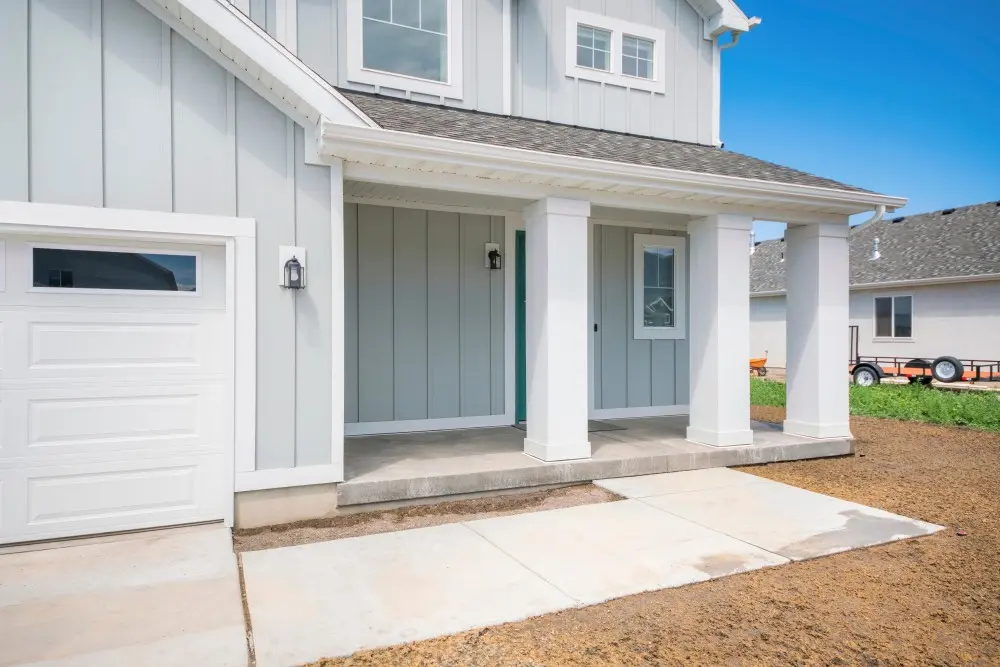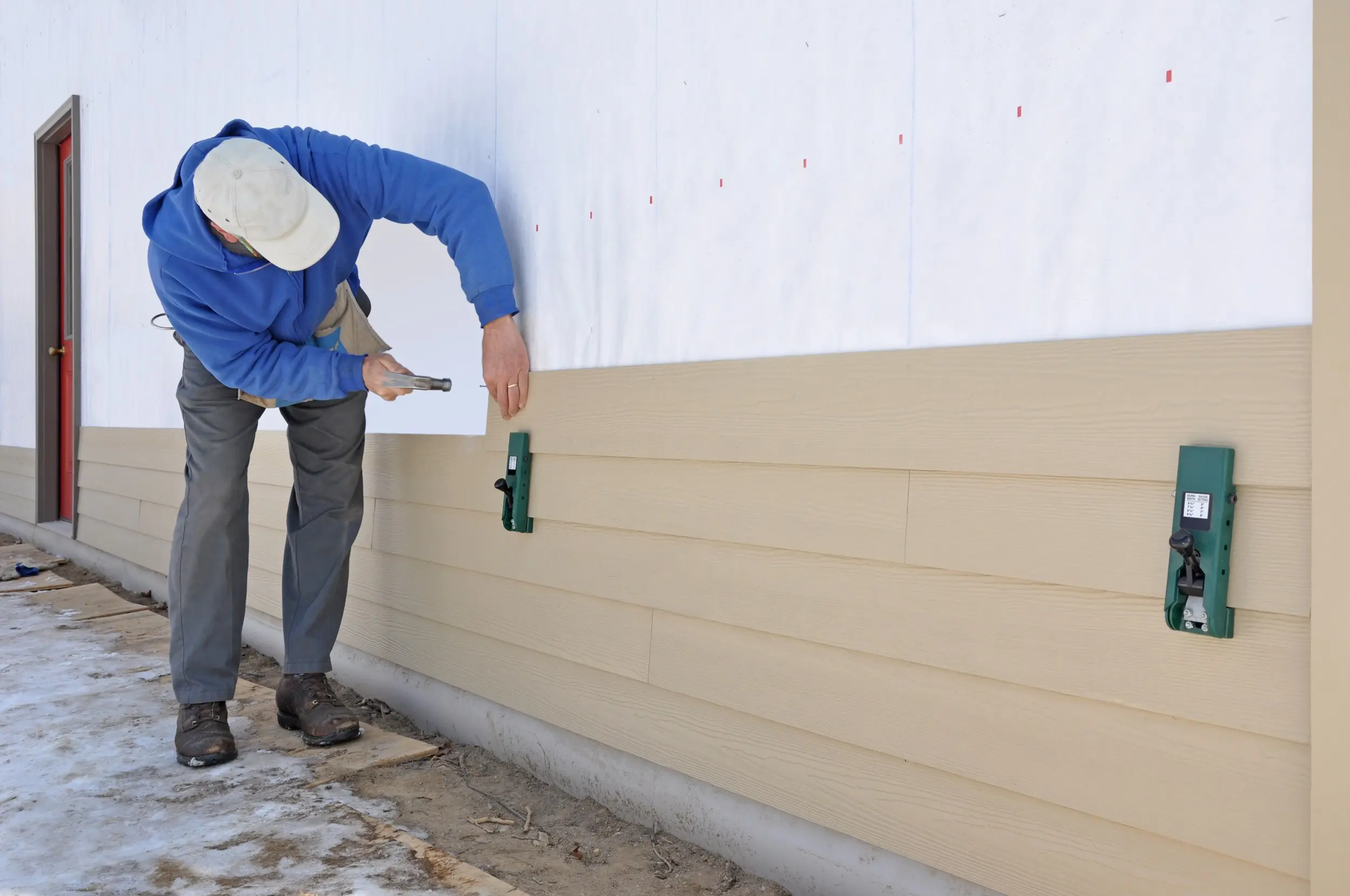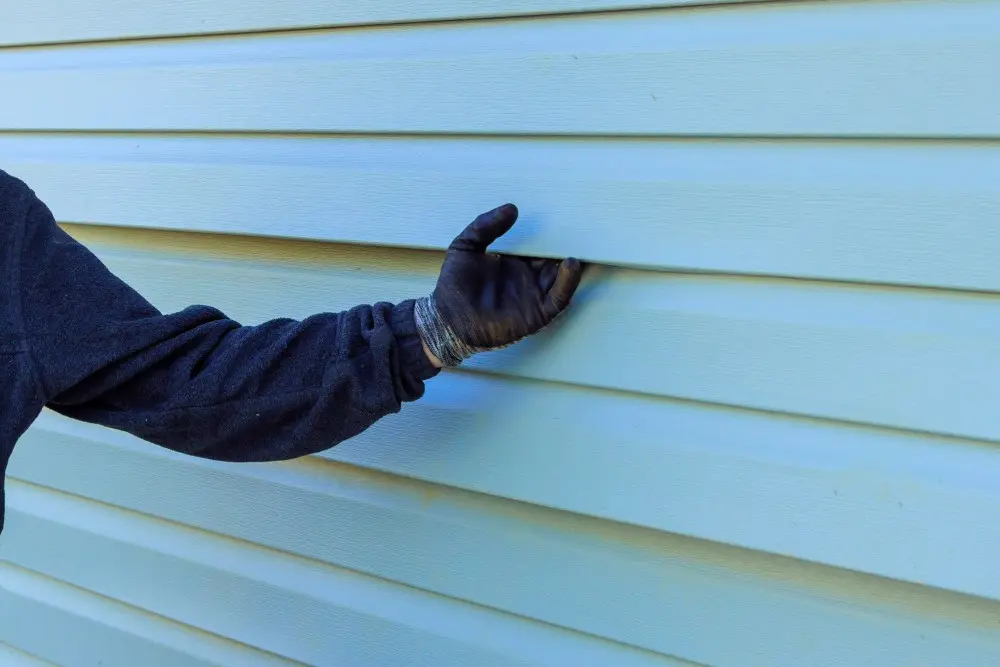What Is Board and Batten Siding? A Chicago Homeowner's Guide.
- 25min
- Updated:10/7/2025
- ByShaunak Ahuja
Ever driven through a Chicago neighborhood and noticed those eye-catching homes with striking vertical lines? Chances are, you were looking at board and batten siding. This classic style has caught on with Chicagoland homeowners, and it's easy to see why.
In this blog post, our siding replacement company, HX Home Solutions, will walk you through everything you should know about board and batten siding, helping you determine if it's the perfect fit for your home.
What Is Board and Batten Siding?
Board and batten siding is a vertical siding style that features wide boards (typically 8-12 inches) installed vertically, with narrow strips called battens covering the seams between boards. The battens, usually 1-3 inches wide, create the characteristic vertical lines that give this batten siding its distinctive appearance.
The term "board and batten" describes the construction method: vertical boards provide the primary coverage, while batten strips seal the joints and create visual interest. This batten siding board system has been used for centuries, originally appearing on barns and agricultural buildings across America.
Benefits of Board and Batten Siding
Beyond its captivating looks, board and batten siding offers a host of practical benefits that make it an excellent choice for homeowners.

Exceptional Durability
Board and batten siding excels in Chicago's harsh weather conditions. The vertical orientation naturally sheds water, while the overlapping battens create multiple barriers against moisture infiltration. Modern board and batten materials like fiber cement and engineered wood offer exceptional durability that can withstand our region's temperature extremes, heavy snowfall, and summer storms.
Enhanced Curb Appeal
The strong vertical lines of batten exterior siding create impressive visual appeal. Whether you prefer tight batten spacing for a modern textured wall or wider spacing for a clean, contemporary look, board and batten style is an easy way to add significant architectural interest to any home's exterior.
Design Versatility
Board and batten siding works beautifully with various architectural styles:
- Modern Farmhouse: Wide boards with moderate spacing create clean, contemporary lines.
- Traditional Colonial: Narrow battens with tight spacing provide classic proportions.
- Contemporary: Tight batten spacing in dark colors creates striking textured walls.
- Rustic Cottage: Wider boards with cedar texture bring warmth and character.
Energy Efficiency
When properly installed with appropriate insulation, board and batten siding contributes to energy-efficient siding systems. The vertical installation method can accommodate continuous insulation to reduce energy costs throughout the Chicago area's temperature extremes.
Board and Batten Siding Materials
Board and batten siding is available in a variety of materials, and each comes with its own unique set of advantages and considerations to weigh. Popular options include:
Fiber Cement Siding
Considered the top choice for board and batten thanks to its exceptional durability and low maintenance, fiber cement comes with a higher upfront cost and requires professional installation.
Wood Siding
While offering an authentic appearance and the flexibility to be painted any color, traditional wood siding demands regular maintenance and is vulnerable to moisture damage.
Engineered Wood Siding
Engineered wood provides the look of wood at a lower cost and boasts better dimensional stability, but it still needs periodic maintenance and isn't as durable as fiber cement.

Vinyl Siding
Vinyl siding is the most budget-friendly entry into the board and batten style with low material costs and easy upkeep, though it can crack in extremely cold temperatures and may fade over time.
Metal Siding
Extremely durable, fire-resistant, and low-maintenance, steel and aluminum board and batten siding provides a modern aesthetic but is more expensive than vinyl and can dent or scratch.
Board and Batten Siding Use Cases
Board and batten siding is an excellent choice for homeowners who want to make a bold architectural statement while ensuring long-term durability. This siding style is particularly well-suited for:
- Complete Exterior Makeovers: When you're ready to transform your home's entire exterior, board and batten creates dramatic curb appeal that stands out in any neighborhood.
- Accent Walls and Focal Points: Perfect for highlighting specific areas like gables, front-facing walls, or architectural features without the expense of re-siding the entire home.
- Mixed Material Applications: Board and batten pairs beautifully with brick veneer, stone, or traditional lap siding to create interesting textural contrasts and visual depth.
- Homes Requiring Weather Protection: If your current siding is failing, or you live in an area prone to harsh weather conditions, board and batten's superior water-shedding properties make it the ideal upgrade.
- Style-Conscious Homeowners: Those drawn to modern farmhouse, contemporary, or traditional architectural styles will find board and batten offers the versatility to achieve their desired aesthetic.
Transform Your Home with Board and Batten Siding
Board and batten siding offers homeowners an exceptional combination of durability, visual appeal, and design versatility. Whether you're drawn to the rustic charm of wood siding, the low-maintenance benefits of fiber cement, or the affordability of vinyl, board and batten style can transform your home's exterior and make a lasting design impression.
At HX Home Solutions, we've helped countless Chicagoland homeowners transform their properties with board and batten siding. We strive to become your remodeling company now and for a lifetime! Contact us today to discuss your vision and get started on your home's transformation!





